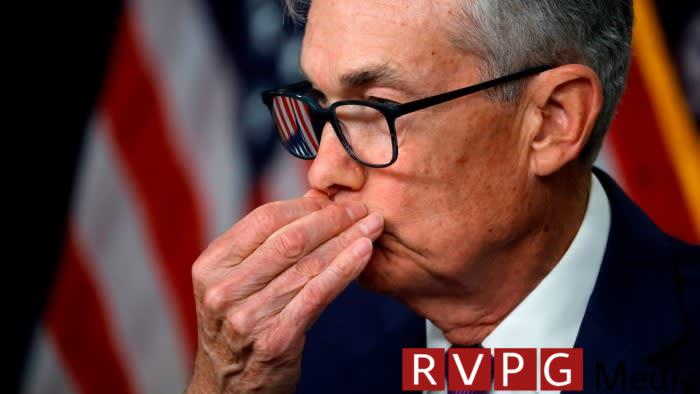President Joe Biden was hoping for support from the Federal Reserve this year. On Wednesday, the Fed dealt a blow to those hopes.
Jay Powell, the chairman of the central bank, confirmed what many had long suspected: interest rate cuts in the world’s largest economy are not imminent. The economy remains too hot to begin easing monetary policy, and the Fed’s mission to push inflation back to its 2 percent target is not yet complete.
The high borrowing costs that American voters are complaining about are likely to last at least until the presidential election in November.
It marks a dilemma for Biden and Powell. The US economy is strong: It is growing faster than other advanced economies and is almost at full employment. But that strength is a big reason the Fed is likely to keep interest rates higher than voters or the president would like.
The Federal Open Market Committee admitted this on Wednesday in Washington, noting that little progress has been made in recent months towards achieving the central bank’s inflation target. The wording of their statement all but ruled out a rate cut in June, when the Fed next meets.
High interest rates would “take more time to do their job,” Powell said, and it would take “longer” for rate setters to feel confident enough to start cutting – words that also cast immediate doubt on cuts in July let.
It puts the world’s most important central bank in a difficult position ahead of an election between Biden and Donald Trump. Interest rate cuts toward the end of the campaign could benefit Biden. Abandoning cuts could help Trump.
Powell insisted in his post-meeting press conference that central bank interest rates will not be set according to this year’s policy calendar. That leaves a cut at the Fed’s September meeting in play – although analysts believe that move would come too close to the Nov. 5 vote.
“It will come right between two presidential debates,” said Vincent Reinhart, chief economist at Dreyfus and Mellon, referring to the Sept. 18 FOMC vote. “The FOMC is appropriately concerned about the public reception of its actions. Around the time of an election, the public may be unclear about its intent. You have to choose a place where you can be sure that the public understands why you do what you do.”
Going into an election while U.S. interest rates are at a 23-year high of 5.25 to 5.5 percent — and mortgage and credit card rates are far higher — would be a blow to Biden’s efforts to win over voters believe the economy was stronger under Trump.
That the Fed has now been forced to keep interest rates high for even longer is a grim reminder that inflation has been uncomfortably high for almost the entirety of Biden’s first term.
Price pressures have had a major impact on the cost of food, energy and housing – goods Powell described on Wednesday as the “basics of life” – and have made inflation by far the biggest economic issue facing the electorate.
The Fed chairman also expressed doubts about whether the central bank would be able to engineer a soft landing and bring inflation back to 2 percent without crashing the economy or causing widespread job losses.
Powell “will not give up” on a Goldilocks scenario, he said Wednesday. The arrival of more workers in the U.S. labor market, for example – a benefit to the economy now overshadowed by political rhetoric about immigration – has helped dampen price pressures in 2023, he noted. It could also “help reduce inflation” this year.
The Fed chairman remained optimistic, saying his “personal forecast” is that the central bank will make some progress toward 2 percent this year as rental costs stop rising as quickly. Still, he didn’t know the slowdown would be “enough” to lower interest rates in 2024.
“We have to be guided by the data,” he said.
These messages from the Fed on Wednesday all contrasted with the more optimistic forecasts it made earlier in the year, which suggested the soft landing was its base case.
But for both Biden and investors watching the Fed’s every move, the central bank’s harsh reality on Wednesday could have been even worse.
A series of data releases pointing to higher-than-expected inflation had raised fears among some market participants that the next rate hike could be a miss. Powell allayed those concerns on Wednesday, saying interest rate hikes to curb the rise in inflation were “unlikely.” New York-listed stocks initially rose before falling later in the day.
“Of course the hurdle for an increase is higher than for a cut, but both are high,” said Diane Swonk, KPMG’s chief U.S. economist.
“The Fed is not confident about how quickly it can get inflation to 2 percent, but it is confident that interest rates are high enough,” said Steven Blitz, chief economist at TS Lombard.
And Powell was also quick to point out that the Fed’s stance on interest rates was a reflection of the strength of the U.S. economy – a subtle dose of good news for anyone watching in the White House.
Powell acknowledged that the Fed would lag its counterparts across the Atlantic – such as the European Central Bank, which will cut interest rates in June – but only because the American economy is so much healthier than others.
“The difference between the United States and other countries that are now thinking about cutting rates is that they just don’t have the growth that we have,” he said. “Their inflation is performing similarly to ours, maybe even a little better, but they are not experiencing the growth that we are experiencing.
“We actually have the luxury of strong growth and a strong labor market, very low unemployment, high job creation and all of that,” he added. “And we can be patient and will be careful and cautious in the decision to cut rates.”
